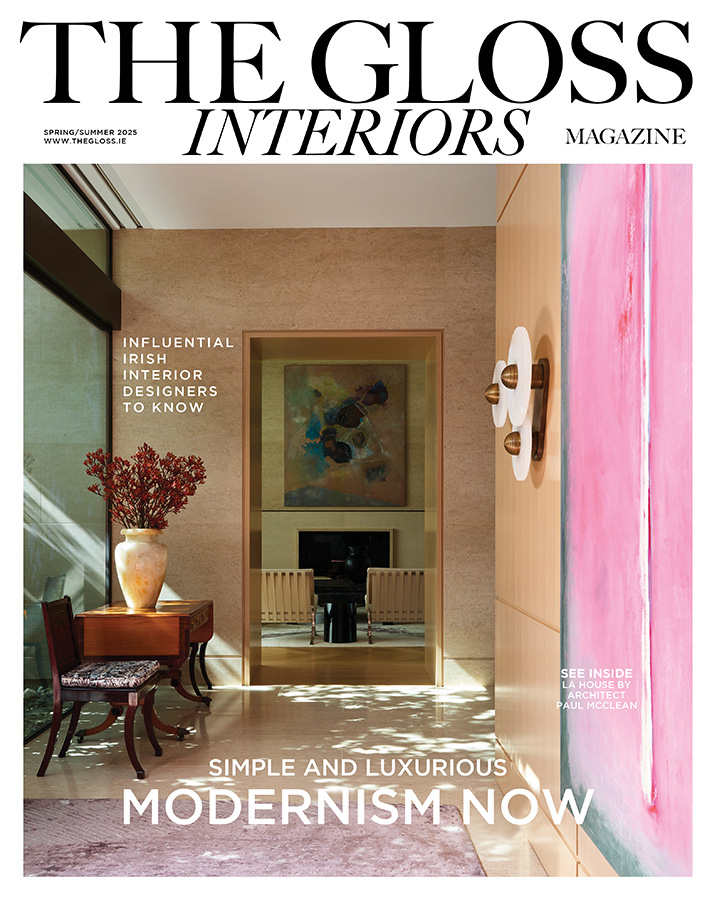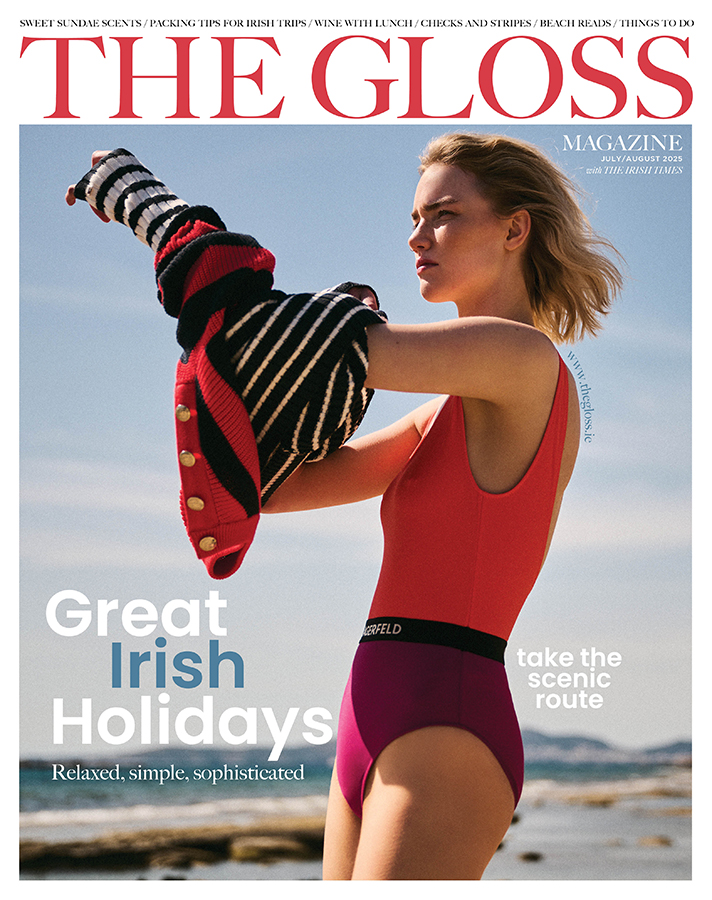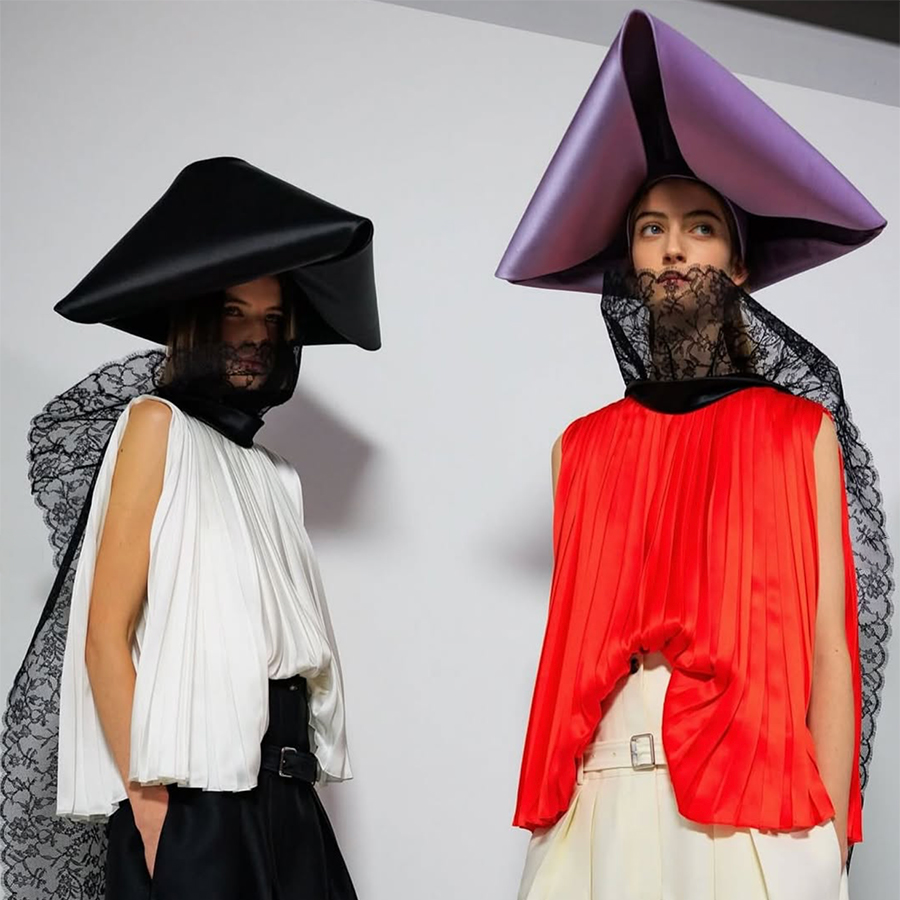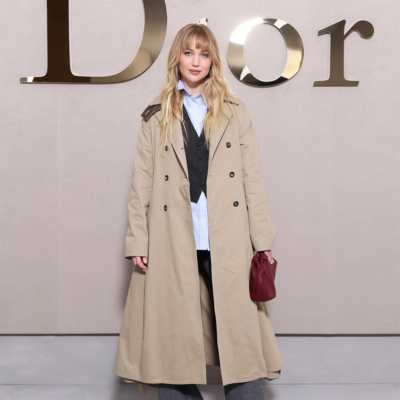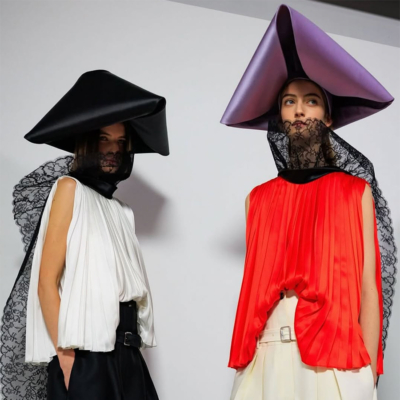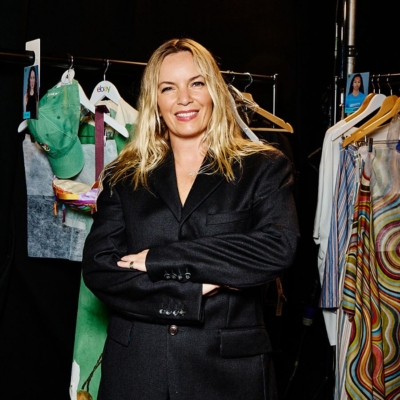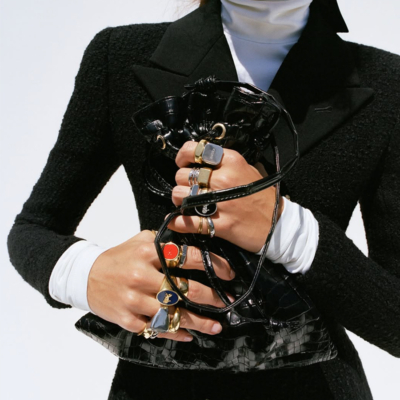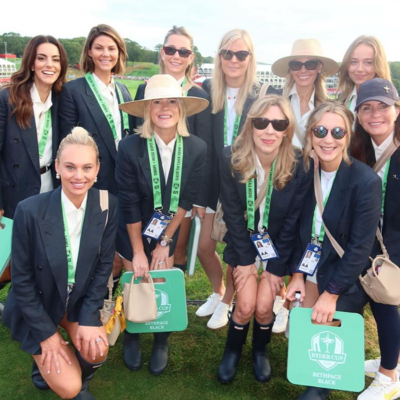Romantic, rebellious and refreshing …
Mesmeric and memorable: Jonathan Anderson’s debut collection for Dior SS26 drew a starry crowd to the Tuileries Garden in Paris where filmmaker Luca Guadagnino designed a striking stage – a grey marble runway set around an upside-down glass pyramid directly invoking the Louvre.
The frow included First Ladies (Carla Bruni and Brigitte Macron), longtime Dior ambassadors Johnny Depp and Charlize Theron, actors Anya Taylor-Joy, Jenna Ortega and Jennifer Lawrence, in addition to K-Pop singers Jimin and Jisoo. On the runway, a nepo model popped up too – Sunday Rose Kidman Urban.
“Do you dare enter the house of Dior?” was the challenge given to guests. The words projected onto a giant screen and accompanied by a short film, created by British documentary filmmaker Adam Curtis. This was a mash-up of previous Dior salon shows with flashes of Alfred Hitchcock films including Pyscho set to Lana del Rey’s Born to Die. All this was a metaphor for Jonathan’s state of mind, apparently. Symbolism prevailed throughout the show, which opened and closed with white dresses – palette and palate cleansers signifying an inspired New Look.
“Dior needed a revamp and this show with its fresh energy woke everyone up. It was modern couture which appealed to a much wider audience,” says Shelly Corkery, former Fashion Buying Director at Brown Thomas. “There was something for everyone, from playful, overtly feminine pieces to more sculptural silhouettes, in addition to the theatricality we associate with Jonathan’s own label and previous work at Loewe. The coats worn back to front, the tricorn hats and shoes with large rosettes. What stood out for me was the collection’s inclusivity; Anderson was empathetic not only to his audience, but also to all the Dior house codes – from the twisted pleats to the hourglass silhouettes and floral embroideries – and previous creative directors. He elevated and softened all that Maria Grazia Chiuri did while also referencing the Yves Saint Laurent era, especially in the dramatic collars, in addition to Galliano’s balletic lace. I loved how he cut and shortened the Bar jacket, and played with the volumes and softness of accessories, in particular the bags. A standout for me were the the sleeveless gowns with voluminous skirts and fabric folds sewed into a weaving intraciato pattern.”
For THE GLOSS Style Editor Aislinn Coffey, the shoes and bags stood out. “Highlights included the Cigale bag, inspired by the archival dress of the same name, which will probably sell like hotcakes. I loved the top handle styles in the different leather finishes. Nina Christen, the buzzy designer in charge of the label’s footwear, seems to have designed a shoe for every occasion, from cool loafers to dainty mules.”
THE GLOSS Contributing Editor Sarah Macken was impressed with the blend of high-low styling. “I’m not a hat person, but I loved the mixing of Galliano-esque hats with bib shirts and statement blouses. One model was wearing hers with capri pants, the other with trousers and trainers. It should have felt remote, but it managed to look exciting, unexpected and the right side of aspirational. As if you just might be able to conjure this girl in real life breezing through the Tuileries.”
Sarah also loved the nod to Marie Antoinette, referenced in Anderson’s debut menswear collection. “Those full dresses – replete with bustles with fluid drapes. The sheer simplicity made them feminine and entirely modern. No easy feat!”
Personal stylist and colour consultant Aoife Dunican, aka The Stylebob, appreciated how Anderson maintained the Dior aesthetic in a fresh way. “He leaned into texture and silhouette rather than loud colour statements. His modern take on the delicate folds that Dior used in the late 1940s were not only beautiful, but very commercial and wearable, especially in those gorgeous skirts. The highlight for me was the accessories, particularly the bags updated with a less ‘ladylike’ polish and more of a day-to-night throw it over your shoulder.”
While Anderson received a standing ovation and rave reviews, not everyone liked the collection, including designer and illustrator Laura Jayne Halton. “I wanted to love it. The collection felt jarring to me, like the code of the house of Dior had been deconstructed to the point where it was unrecognisable. On the designers notes, Anderson states ‘change is inevitable’ and while that may be so, all change is not progress, or beautiful. I understand that there’s a tension between heritage and reinvention, and that signature flattering, feminine silhouette of the legacy brand did make a brief appearance in a small number of dresses on the runway, like superbly draped hourglass dresses with bow detailing and exquisitely tailored blazers. I enjoyed seeing the integration of elements of collections past, like a collar detail echoing the petals of the 1949 Junon dress and the nod to the New Look peplum of the infamous Bar suit. However, the puffball hems and micro denim skirts gave me flashbacks to early 2000s teenage disco looks – far from the elegance which the house of Dior was built upon. I appreciate the skill and technicality of many of the pieces, but I could see them sitting perfectly in the window of a Loewe boutique rather than holding their own alongside the sophisticated works of art at 30 Avenue Montaigne.”
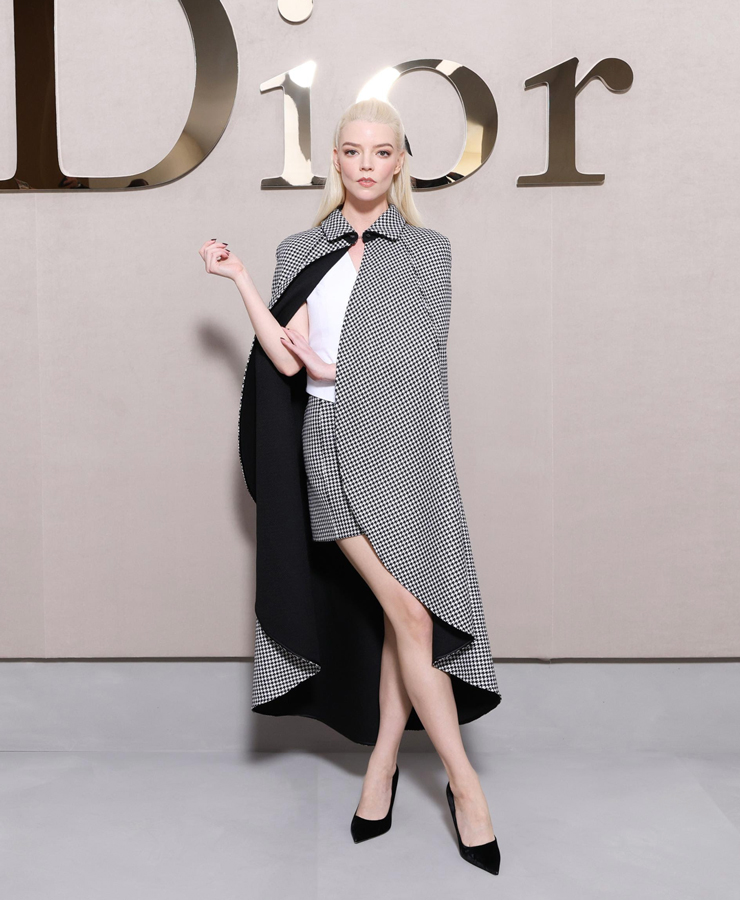
THE GLOSS Contributing Editor Penny McCormick didn’t like Anderson’s multiple interpretations of the iconic Bar jacket – now shrunken, elongated or hybrid with bulky ruffles. “I preferred the collection of wearable capes for day and evening wear, as seen on one of his guests Anya Taylor-Joy. However, I thought it was inspired that Anderson referenced his debut menswear collection in the high-neck bow-tied blouses. It was good to see some Irish tweed in the mix too. A further nod to home was the reading of Byron’s poem, She Walks In Beauty. While appealing to romantics in the audience, I like to think it was for Anderson’s mother Heather, a former English teacher. All told, an eloquent beginning.”



